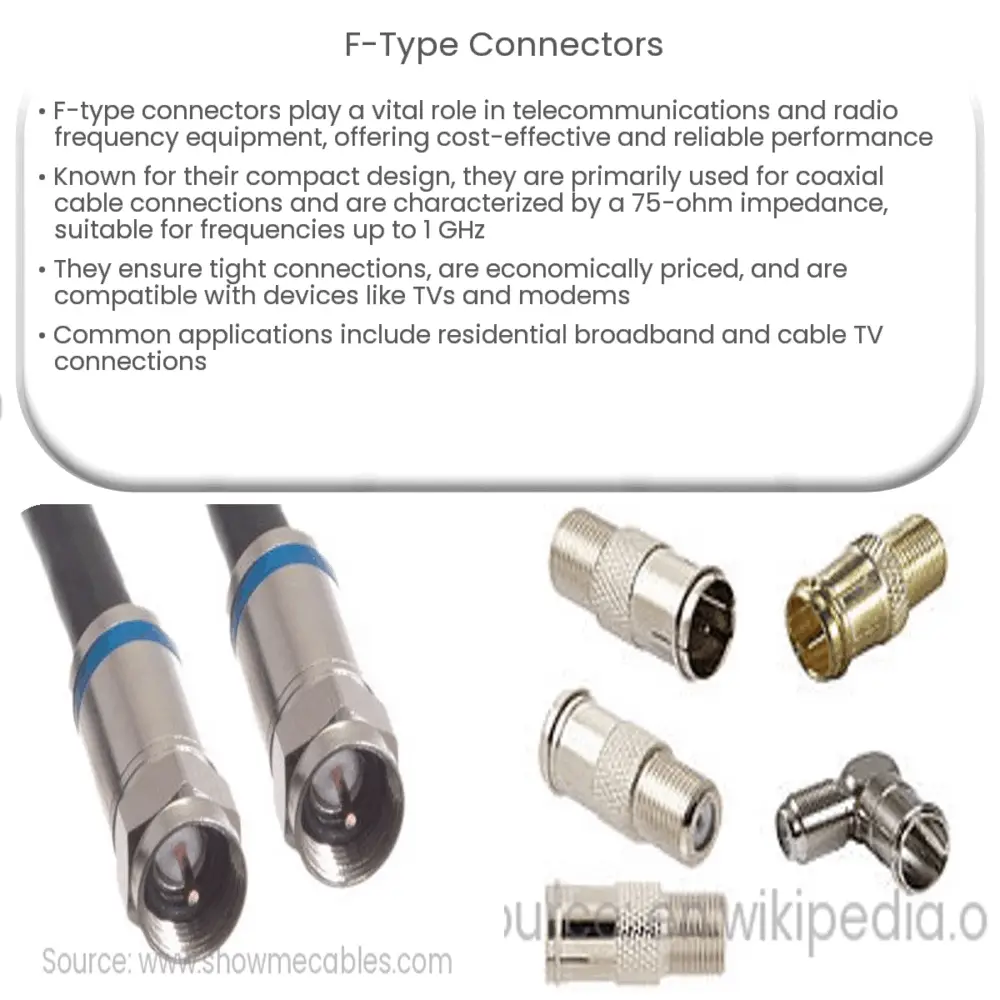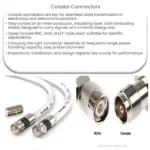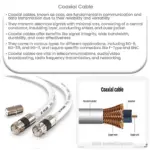Explore the world of F-type connectors – their features, benefits, types, and applications in the telecommunications industry.

F-Type Connectors: An Overview
When it comes to telecommunications and radio frequency equipment, connectors play a crucial role in facilitating efficient transmission and reception of signals. Among the numerous types of connectors available, the F-type connector is a popular choice due to its cost-effective yet reliable performance. This article delves into the features, benefits, and applications of this essential piece of hardware.
Features of F-Type Connectors
F-type connectors, known for their compact and efficient design, are primarily used for coaxial cable connections. These connectors typically come in male and female variants and are characterized by their screw-on mechanism, which ensures a secure and sturdy connection.
One distinctive feature of F-type connectors is their 75-ohm impedance, making them ideal for frequencies up to 1 GHz. This characteristic impedance aligns with the standard coaxial cables used in most residential broadband and cable television applications, thereby ensuring minimal signal loss.
Benefits of Using F-Type Connectors
-
Efficiency: The screw-on design of F-type connectors ensures a tight and secure connection, which helps prevent signal loss and maintain optimal performance.
-
Cost-Effectiveness: F-type connectors are often more affordable compared to many other types of connectors, making them an economical choice for installations.
-
Compatibility: Due to their standard design, F-type connectors are highly compatible with various devices, such as TVs, modems, antennas, and satellite dishes.
-
Easy Installation: With their screw-on design, these connectors are relatively easy to install and do not require any specialized tools.
Applications of F-Type Connectors
F-type connectors are widely used in several applications across different industries. The most common uses can be seen in the residential sector, where they connect cable television and broadband internet services. However, their usage extends beyond just these services.
Due to their wide frequency range and 75-ohm impedance, these connectors are also suitable for connecting satellite dishes, antennas, and various other RF devices. Whether it’s a home setup or a professional installation, F-type connectors offer a versatile and reliable solution.
Furthermore, with the development of newer and more sophisticated equipment, F-type connectors continue to play a significant role in the telecommunications industry.
Types of F-Type Connectors
There are various types of F-type connectors designed to suit a range of coaxial cables. The most common ones are the crimp, compression, and twist-on connectors.
-
Crimp connectors: These require a special crimping tool to attach to the cable. They offer a very secure connection and are commonly used in professional installations.
-
Compression connectors: Like crimp connectors, these also require a specific tool for installation. However, they offer an even more secure connection and are considered the most reliable type of F-type connector.
-
Twist-on connectors: These can be installed by simply twisting them onto the cable. While they may not provide as secure a connection as crimp or compression connectors, they are easier to install and do not require any tools.
Understanding F-Type Connector Sizes
The size of an F-type connector is primarily determined by the size of the coaxial cable to which it will be attached. The most commonly used sizes in residential applications are RG-59 and RG-6. RG-59 connectors are often used for video applications, while RG-6 connectors are typically used for digital and high-definition signals.
The critical thing to remember is that the connector and the cable must be of the same size to ensure a proper connection. Using mismatched sizes can lead to poor signal quality and potential damage to the equipment.
Conclusion
In conclusion, F-type connectors are an integral part of many telecommunications and RF systems. They offer a cost-effective, efficient, and reliable means of connecting coaxial cables to various devices. Whether it’s for cable TV, broadband internet, or a satellite dish, these connectors ensure a smooth and uninterrupted transmission of signals.
When choosing an F-type connector, it’s important to consider the type of cable you’re using and the kind of connector that best suits your needs. Whether you need a twist-on connector for ease of installation or a compression connector for a more secure fit, there’s an F-type connector out there for you.
With their widespread use and critical role in signal transmission, F-type connectors will continue to be a cornerstone of the telecommunications industry.




